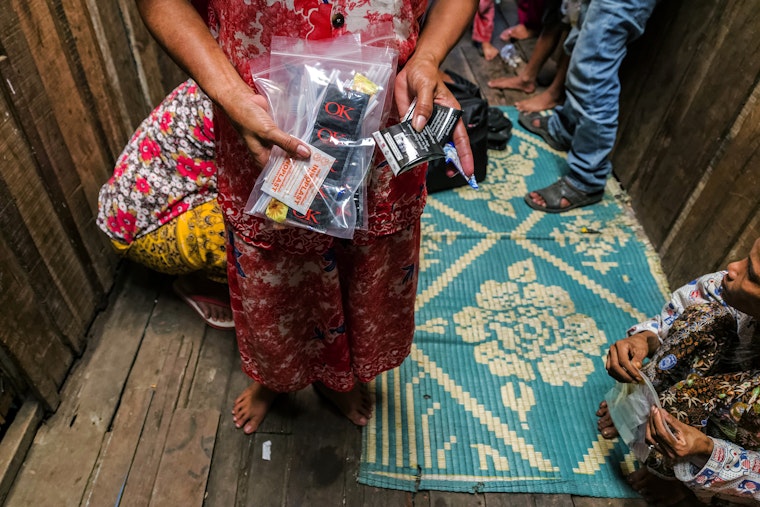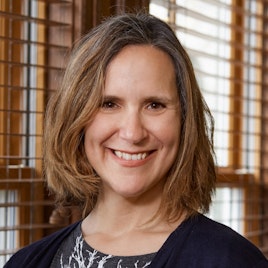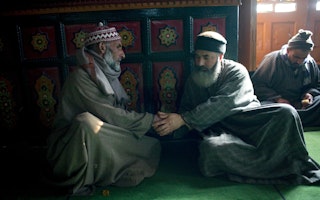The Dire Consequences of Slashing U.S. Global HIV Assistance
By Julia Greenberg

For global health funding, the events of the past month haven’t been worrisome—they’ve been potentially catastrophic.
First, there was the federal budget proposal released by the White House on May 22, which consisted of plans to cut $1 billion from global AIDS programs—representing 17 percent cuts to the Global Fund to Fight AIDS, TB, and Malaria and programs of the President’s Emergency Plan for AIDS Relief (PEPFAR).
According to Friends of the Global Fight, cuts to the Global Fund will mean nearly an additional 300,000 lives lost per year, and a potential 4.28 million new HIV, tuberculosis, and malaria infections. The Foundation for AIDS Research, meanwhile, estimates that cuts to PEPFAR would lead to approximately 250,000 people experiencing disruptions in their treatment and 40,000 additional AIDS-related deaths.
Second, the Trump administration put out “guidance” on the executive order known as the “global gag rule.” The guidance stipulated that in order to receive U.S. global health assistance of any kind, foreign nongovernmental organizations must pledge to not even mention abortion to patients, and to not advocate for abortion law reform.
Past versions of the gag rule only applied to U.S. funding for family planning programs, and covered approximately $600 million of U.S. family planning money. That was bad enough. But the Trump administration’s global gag rule covers all forms of health assistance, totaling approximately $8.8 billion—nearly 15 times as much as prior versions.
All of this is on top of a decision made in April to withdraw U.S. support to the UN Population Fund, which will affect family planning programs in more than 150 countries. The United States is the second largest donor to the fund, and will cut its contribution in half.
Cuts this severe should worry anyone who cares about global health. By slashing AIDS funding to this degree, the United States isn’t just putting lives at risk. It’s reversing a great achievement of U.S. foreign assistance for health: providing support for socially excluded groups, and helping put them on the front lines of the fight against HIV.
These include people who use drugs, sex workers, transgender people, and sexually active adolescent girls, who not only bear the greatest burden and risk of disease in most countries, but who have organized to fight the laws (harsh anti-sodomy legislation) and policies (bans on comprehensive sexuality education in school) that have pushed them into the shadows and denied them HIV services.
Thanks to years of creative and relentless activism from these individuals and communities PEPFAR and the Global Fund have channeled hundreds of millions of dollars to programs to reduce barriers to access to HIV services for stigmatized communities at risk. Policymakers now appreciate, to a degree they did not before, that community participation and mobilization are essential weapons in the fight against this disease. The United States played a helpful role in making this possible, saving hundreds of thousands of lives in the process.
This progress has been hard-won, and it should not be so easily discarded.
So at the same time that advocates and legislators work to stop the Trump administration’s proposed cuts, they also need to remember—and defend—the good that U.S. foreign assistance has done for people in marginalized communities. We cannot accept, much less become complicit in, a policy that pushes these groups back to the margins by allowing AIDS funding to be distributed solely on the basis of economic efficiency and national interest. As the complicated legacy of the U.S. HIV response under President George W. Bush shows, the way AIDS funds are distributed can be as important as their total amount.
For example, while it’s true to say that the Bush administration oversaw an unprecedented “scale-up” of access to lifesaving treatment—for which it deserves enormous credit—these years were also the time when abstinence-only education was privileged, when discrimination against sex workers was allowed, and when other socially excluded groups encountered what seemed like impenetrable barriers to accessing HIV services. Because of the political expediency that characterized this era, many groups in desperate need of assistance—women fighting forced sterilization in rural Africa, gay and transgender people demanding access to HIV treatment in Southeast Asia, sex workers demanding access to prevention services as a matter of rights in India, and so on—went ignored.
Put simply, while the scale-up saved lives, the further marginalization of people within these communities cost lives, too. And if we ignore the substantial improvements won by allowing marginalized people to use these funds as they think best, we not only risk losing these gains, but further normalizing these people’s social exclusion in the process.
For proof that the recent inclusive approach is working, look no further than the recent PEPFAR Country Operational Planning reviews in Johannesburg, South Africa. Thanks to the presence of community advocates at these intense, multiday meetings with U.S. government staff, funding for groups hardest-hit by the epidemic—men having sex with men in East Africa, people already living with HIV in Zimbabwe—was markedly increased. Along the same lines, the Global Fund recently released new guidelines on how governments and communities can rapidly implement education programs about human rights and gender equality. Including the voices of those affected by the crisis without stigmatizing them produces better outcomes.
In the face of such unprecedented threats to funding and global health, the chance to erase “controversial” elements of global HIV programming may be tempting. But that temptation must be resisted. Let’s fight for a fully funded global HIV response that also remains inclusive—one that honors the diverse, vibrant, creative, and marginalized communities who have spent decades heroically battling this disease.

Until November 2021, Julia Greenberg was the director of governance and financing at the Open Society Public Health Program.

